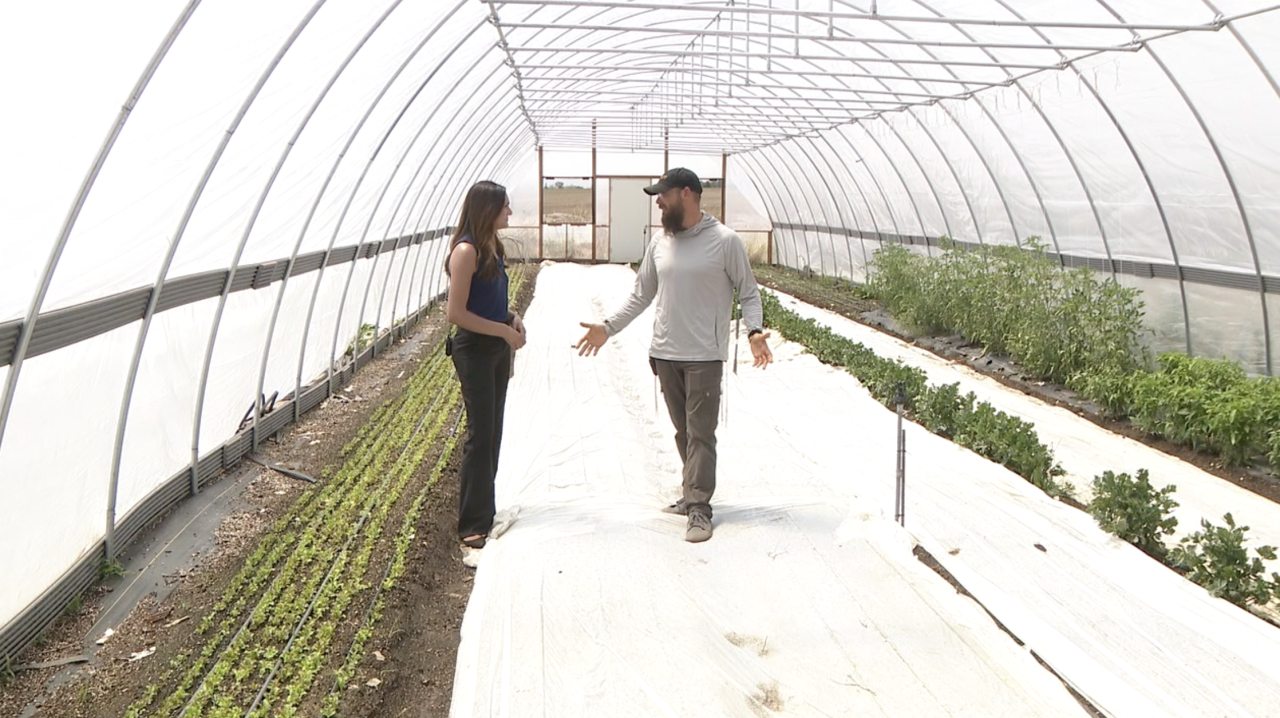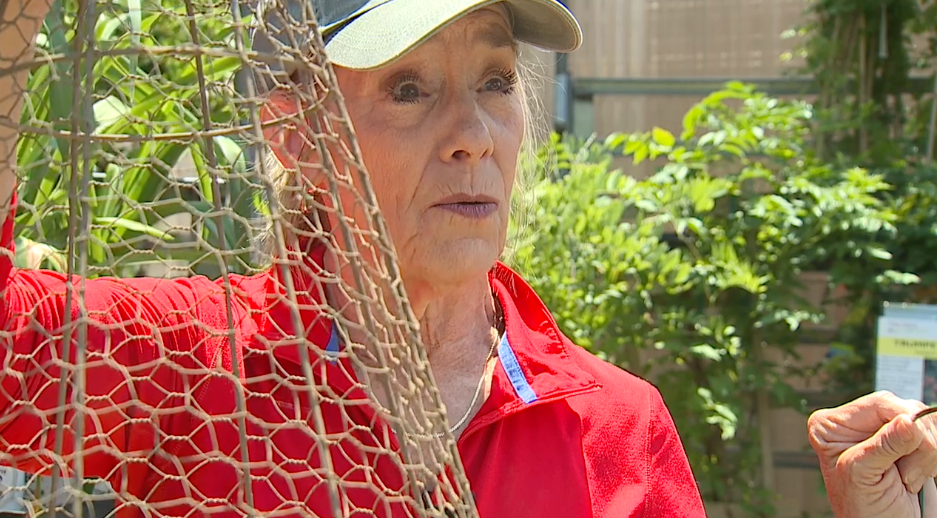DENVER — Whether it's acres of crops or backyard gardens, Coloradans with green thumbs are facing a grasshopper invasion not seen in quite some time.
Home gardeners and Colorado farmers are looking for a plan of attack against the little creatures, which are doing a lot of damage.
"This summer has been absolutely horrendous," said Yosef Camire of Ahavah Farm in Peyton. "It's just been a battle, a constant battle, against these grasshoppers. They've crushed us and they've decimated an enormous amount of our crops."

Environment
Colorado farmers struggle as infestation of grasshoppers destroys crops
While Ahavah Farm has adapted to battle grasshoppers, Camire said he hopes customers of organic vegetables and fruits will stay a little patient with the end product.
“All of us farmers that refuse to use chemicals are in the same position," Camire told Denver7. "There’s going to be holes in your Swiss chard. There’s going to be holes in your greens and lettuces — if there is any. If you care about local, if you care about organic agriculture, keep on going out there and supporting the farmers because we’re all in this together. It’s a bad year.”

Over at Tagawa Gardens in Centennial, Luan Akin, ambassador for the garden center, is not at a loss of words over this year’s grasshopper outbreak.
“You’re saying they’re particularly bad this year — they’re wretched, horrible. I had my sister-in-law call it biblical,” Akin said. “You sweep your hand across some flowers, bushes, shrubs and you get a burst of grasshoppers right in your face going every which way and that’s part of the problem in how they move."
Colorado has over 100 species of grasshoppers and are difficult to control since they are mobile little creatures.
“We have several different varieties of grasshoppers in Colorado, which basically means several different colors but pretty much the same life habit and same destructive power," Akin added. "The bigger they are, the harder they are to get rid of."
So, how do you get rid of grasshoppers in Colorado? There are natural and chemical-based methods.
“I try to garden as much as possible organically,” Akin said. “We are hearing even some of the more powerful synthetic insecticides we assumed would control the grasshoppers are not doing that great of a job."
One method is using insecticidal soap.
"Insects carry their skeleton on the outside," she explained. "It’s what we think of a shell — it’s their exoskeleton. Insecticidal soap will soften that and can damage them and eventually kill them."
For insecticidal soap to be effective, it must be sprayed on the insect.
"You can’t just spray it and walk away," Akin said. "You have to get the insects full on targeted. The secret is to get your pesticide or your preventative on while they’re really young because they’re much easier to control when they’re tiny.”
Diatomaceous Earth, or DE, is another method.
“It’s something that comes from ancient sea creatures called diatoms," she said. "Their shells are very, very sharp. They powder into something that will pierce that soft outer skeleton exoskeleton."
That leads to dehydration and eventually the grasshoppers die.

If gardeners don’t like these options, Akin said there are other natural ways to try and get rid of grasshoppers, including sealing off the plants.
“There are ways to exclude them, which can be a little more labor intensive but they can also be the most effective,” said Akin. “We use different kinds of supports to create what would amount to a tent — and you create a tunnel or some kind of exclusion in your garden."
It’s a fine-mesh screen placed around the tent meaning the sun can shine through to the plant or vegetable.
“Your flowers can be just fine but the grasshoppers can’t get in,” she said. “You have to work hard at it and make it grasshopper-proof. This is a great way if you’re willing to put in the labor."
She said there are different supports you can use to then wrap around the mesh. Options include a support used to keep out rabbits or a tomato cage.
Akin suggested using strong clips to hold down the mesh since the wind can really pick up in Colorado and you don’t want your mesh to fly away.
Colorado State University Extension also recommends the tent idea, but added grasshoppers can sometimes chew through fabrics.
Introducing grasshopper predators is one solution CSU recommends. You can check out some of their ideas in this online article.
"Some insects commonly feed on grasshoppers," CSU wrote. "Many species of blister beetles develop on grasshopper egg pods and blister beetle abundance cycles along with their grasshopper hosts. Adult robber flies are common predators of grasshoppers during summer and other flies develop as internal parasites of grasshoppers. Many birds, notably horned larks and kestrals, feed heavily on grasshoppers. Grasshoppers are also frequently eaten by coyotes."
Using sprays or baits is a common method to keep grasshoppers out of your garden.
CSU writes that these solutions work best as grasshoppers develop and where the eggs are laid.
"Ability to control grasshoppers declines as grasshoppers develop and migrate," writes CSU, adding insecticides are more effective during breeding season.
To read more about insecticide options, continue reading CSU’s article at this link.
“We’re having so many grasshoppers this year because we had a mild, fairly mild, wet winter,” said Akin. “They lay their eggs about this far (2 inches) below the soil line and if you live anywhere that has weeds — that combined with a hot, dry spring allows more of them to hatch and earlier than ever before.”
If you have a method that has worked in your Denver metro backyard, let us know by emailing jeff.anastasio@denver7.com.





